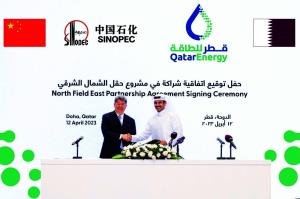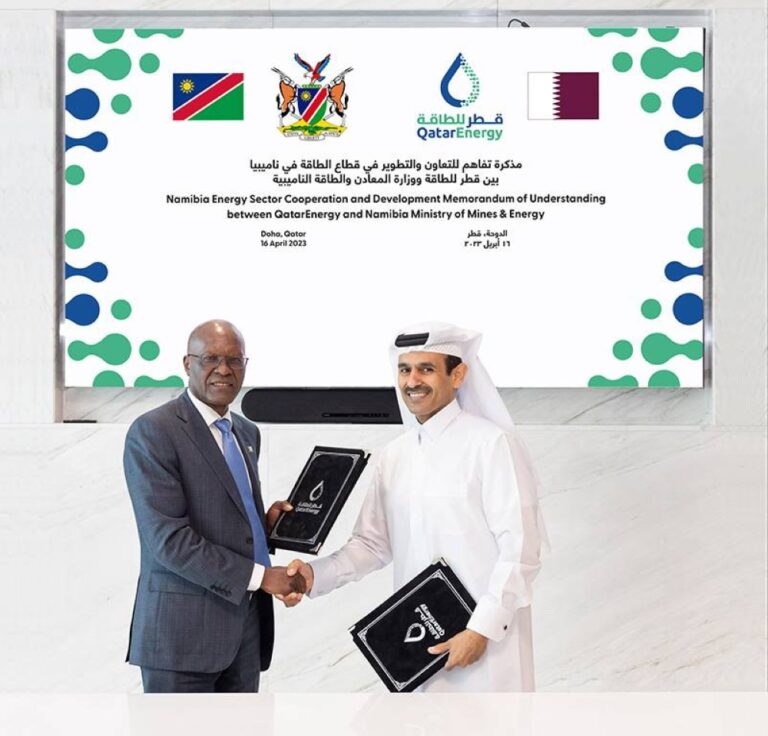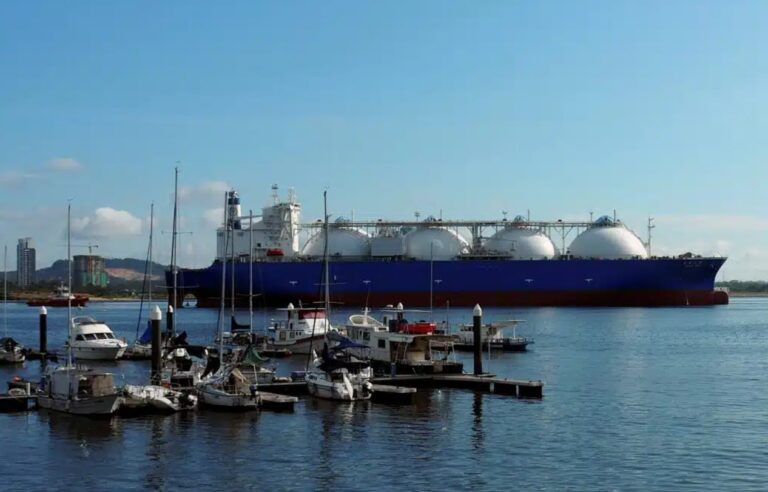Qatarenergy Selects Sinopec As NFE Expansion Partner

(MENAFN– Gulf Times) QatarEnergy has announced the signing of a“definitive” partnership agreement with China Petrochemical Corporation (Sinopec) for the North Field East (NFE) expansion project, the largest project in the history of the LNG industry.
The agreement was signed by HE the Minister of State for Energy Affairs, Saad Sherida al-Kaabi, also the President and CEO of QatarEnergy, and Dr. MA Yong-sheng, chairman, Sinopec at a ceremony held at QatarEnergy’s headquarters and attended by senior executives from both companies Wednesday.
The agreement marks the entry of Sinopec as a shareholder in one of the NFE joint venture companies that own the NFE project, one of the most critical projects in the global LNG industry.
Pursuant to the terms of the agreement, QatarEnergy will transfer to Sinopec a 5% interest in the equivalent of one NFE train with a capacity of 8 million tons per annum (MTPA). This agreement will not affect the participating interests of any of the other shareholders.
Speaking at the signing ceremony, al-Kaabi said,“The People’s Republic of China is a major driver of the global energy markets as well as being one of the most important gas markets in the world and is a key market for Qatari energy products.
“Today’s event underscores QatarEnergy’s commitment to deepening its relationships with key LNG consumers, while prioritising long-term strategic partnerships and alignment with world class partners from China, represented by Sinopec here today.”
Noting the November 2022 agreement to supply Sinopec with 4 MTPA of LNG from the NFE project, al-Kaabi said:“That agreement was not only the first NFE LNG supply agreement to be announced, but also the longest LNG supply agreement in the history of the industry. Today, Sinopec will join Qatar’s LNG family becoming the first Asian shareholder in the NFE project.”
“We are pleased to enter into this milestone agreement with Sinopec, marking yet another landmark in the excellent bilateral relations between the People’s Republic of China and the State of Qatar. I would like to thank the working teams in QatarEnergy and Sinopec for their dedicated work to reach this important agreement.
“We are always indebted to the wise leadership of His Highness the Amir Sheikh Tamim bin Hamad al-Thani, and to his continued guidance and support of the energy sector,” al-Kaabi concluded.
On his part, Dr Yongsheng congratulated both parties on signing the NFE project partnership agreement and said,“The meeting between Chinese President Xi Jinping and Qatar’s Amir His Highness Sheikh Tamim bin Hamad al-Thani during the first China-Arab Summit and China-GCC Summit in 2022, comprehensively outlined the development blueprint of the strategic partnership between the two countries and guided the China-Qatar energy cooperation.
“The signing of this agreement today is a concrete move to carry forward what has been agreed between the two heads of state and deepen the partnership between Sinopec and QatarEnergy. It is another milestone after the signing of the long-term LNG SPA from the NFE project in November 2022, marking the integrated cooperation achieved by both companies on the NFE project.”
“China-Qatar energy cooperation features a natural complementarity. QatarEnergy is a leading LNG producer in the world and one of the most important partners of Sinopec. The cooperation with QatarEnergy will help Sinopec further optimise China’s energy consumption structure and enhance the security, stability, and reliability of clean energy supply.
“I hope that the two companies will continue to explore new LNG cooperation opportunities based on the solid foundation we have laid together and will further expand cooperation areas to achieve mutual benefit and win-win results,” he added.
This agreement is the first of its kind after last year’s series of partnership announcements in the $28.75bn NFE project, which will raise Qatar’s LNG export capacity from the current 77mn tonnes per year to 110mn tons per year.








